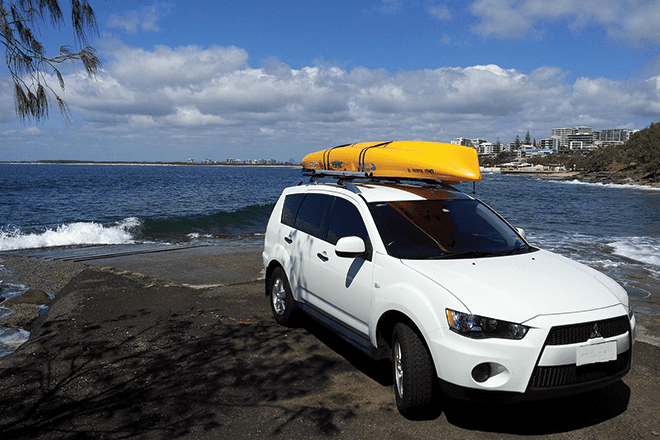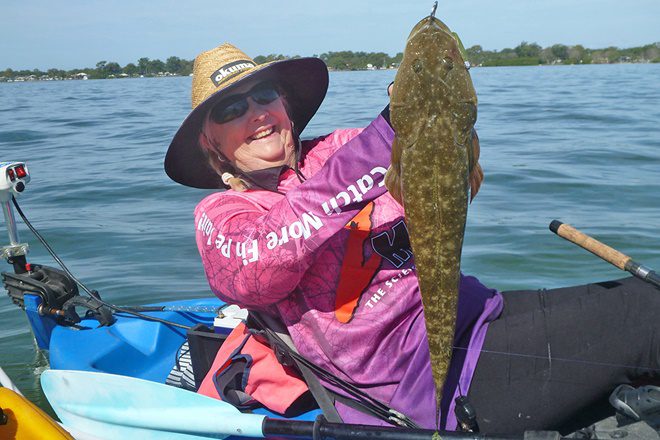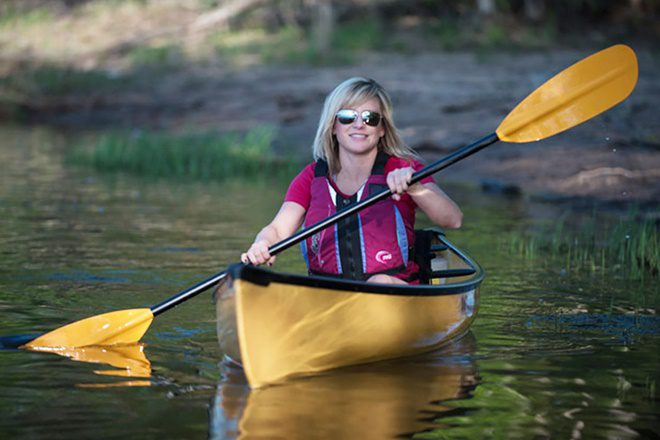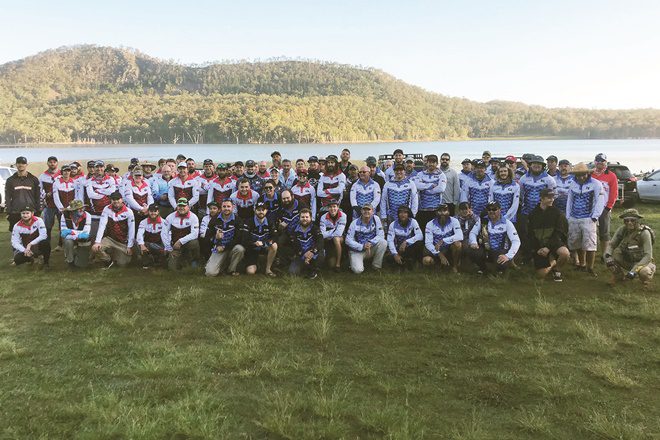Transporting kayaks on roof racks is safe as long as you use good-quality straps to secure your craft.
It usually won’t be long before you start heading out with other kayakers and the suggestion to carpool is brought up. Getting more than one kayak onto your car’s roof is possible, here are some tips on transporting kayaks.
Firstly and most importantly is to find out what the maximum weight limit is for your car’s roof. An SUV with roof rails usually has quite a heavy load rating compared to say a Jeep Wrangler with a fiberglass roof panel. Your car’s manufacturer will have this information available but if you buy aftermarket racks you may need to check if that component is rated to the same specifications as the car.
J racks are an easy way to get two (or more) kayaks to fit onto your roof. They bolt onto the crossbars of your roof racks and fold out to cradle a kayak on an angle at the side of the car, leaving ample room to lay another along the middle.
They can be quite expensive and even when folded down and not in use add height to your car, so care is needed in underground carparks.
Many smaller creek-bashing sit-on-top kayaks are designed to stack on top of each other, making transport easier. Mixing and matching different kayaks requires extra care and a degree of trial and error is involved in working out the best way to fit them together.
Lay the first hull deck down on the racks and either strap it or get someone to stop it sliding off the other side of the car as you lay the second kayak against the side of it. Longer straps will be needed here because kayak-specific straps are too short.
Once strapped, start tightening both straps and then give the hulls a push and a pull at both ends while you continue tightening the straps. This step is very important because it will help the hulls nest together and prevent the straps coming loose as you drive. From my experience, any two kayaks will nest together nicely on my car.
The hardest combination so far was two Viking Espri hulls. They have a backrest that flares up and I had to lay the second hull with the deck facing up. Usually I lay the second yak with the deck facing down. However it wasn’t an issue.
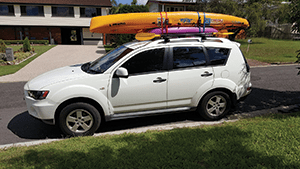
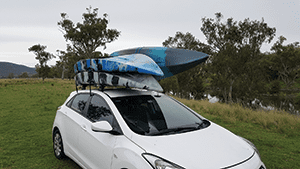
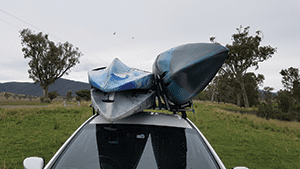
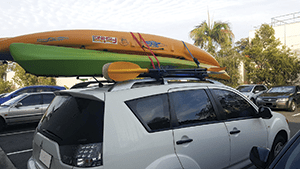
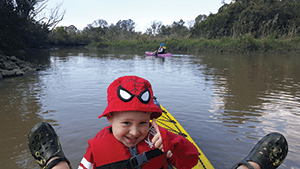
Adding two or more kayaks to the roof of the car increases drag noticeably and decreases fuel economy, in my experience adding just over two litres per 100km at highway speeds. It also causes noticeable disturbance when passing large trucks travelling in the opposite direction, so I check the tightness of the clamps attaching the crossbars to the roof rails before heading off.
When transporting kayaks on the roof, there can be considerable weight up high, so remember to allow for that when cornering. Even an extra 20kg up there can make your car lean more while cornering and lead to dramas, especially on dirt roads. I have seen the result of rollovers with kayaks on two occasions and was impressed at how well the kayaks fared as opposed to the cars.
The final advice I can offer is to buy good-quality straps and buckles and check their tension after a few kilometres of travel. The hull design of most kayaks has the widest point in the middle and tapers to the bow and stern, so positioning the kayaks’ widest part at the halfway point between the crossbars will minimise any chance of the hulls moving or slipping when strapped tight.
Don’t forget to send your kayak catches in to ben@bnbfishing.com.au to get your face on the Readers Forum page.
 Bush ‘n Beach Fishing Magazine Location reports & tips for fishing, boating, camping, kayaking, 4WDing in Queensland and Northern NSW
Bush ‘n Beach Fishing Magazine Location reports & tips for fishing, boating, camping, kayaking, 4WDing in Queensland and Northern NSW

